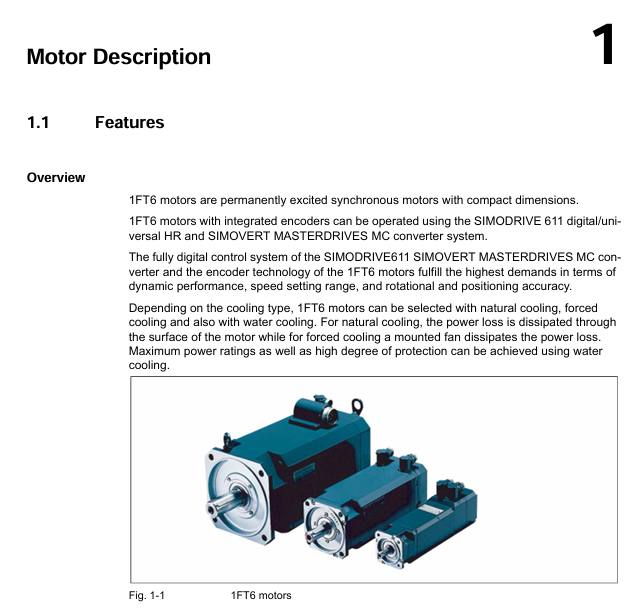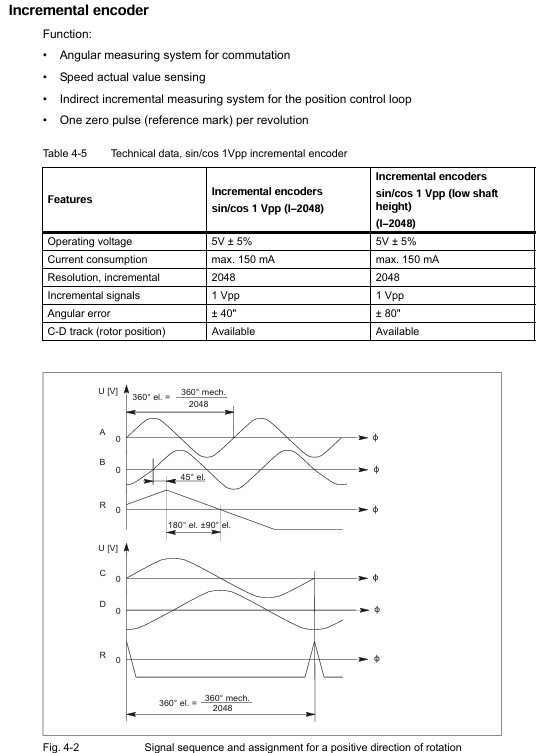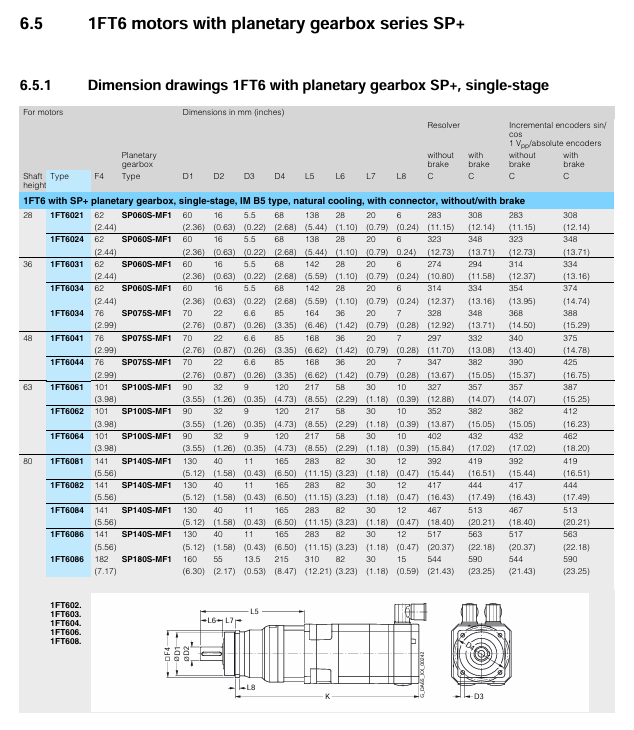

K-WANG


SIEMIENS PFT6 series weighing sensor
SIEMIENS PFT6 series weighing sensor
Product core positioning
The PFT6 series is a strain gauge weighing sensor designed for harsh industrial environments. Its core advantages are high precision, high protection, and strong anti-interference ability. It is suitable for scenarios with strict requirements for weighing accuracy, such as batching systems and trade settlement belt scales. The range covers 10kg-5000kg and can meet the needs of industrial weighing from light to medium.
Product principle and core features
1. Measurement principle
Based on the effect of resistance strain gauges, the core structure consists of a metal elastomer and resistance strain gauges attached to the elastomer
When the sensor is subjected to a load, the metal elastomer undergoes slight deformation;
Strain gauges undergo resistance changes with the deformation of the elastic body (stretching → increasing resistance, compression → decreasing resistance);
Convert the resistance change into a voltage signal (rated output 2mV/V) through a Wheatstone bridge, and transmit it to the weighing instrument for data processing.
2. Core Features
High precision level: C3 level in accordance with OIML R60 standard (suitable for medium to high precision weighing, division value ≤ 3000), ensuring the accuracy of trade settlement and industrial batching;
High protection performance: The conventional model has a protection level of IP67 (dustproof, anti short-term immersion), and the special customized model can reach IP68 (no damage after soaking in 1m underwater for 24 hours), suitable for harsh industrial environments such as dust and humidity;
Wide temperature adaptability: Temperature compensation range of * * -10 ℃~+40 ℃ (ensuring stable accuracy within this range), working temperature range of -30 ℃~+60 ℃ * *, suitable for high and low temperature industrial scenarios;
Anti interference capability: The single ended grounding design of the cable shielding layer reduces electromagnetic interference (EMC) and is suitable for industrial strong electromagnetic environments;
Overload protection: Safe overload capacity of 150% rated load (R.C.), ultimate overload capacity of 300% R.C., to avoid permanent damage caused by accidental overload.

Key technical parameters
1. Range and accuracy parameters
Range (R.C.) Accuracy level Nonlinear (≤±% R.O.) Lag (≤±% R.O.) Repeatability (≤±% R.O.) Sensitivity Temperature drift (≤±% R.O./℃)
10kg-50kg OIML C3 0.02 0.02 0.01 0.0005
100kg-200kg OIML C3 0.02 0.02 0.01 0.0005
500kg-1000kg OIML C3 0.02 0.02 0.01 0.0005
2000kg-5000kg OIML C3 0.02 0.02 0.01 0.0005
Note: R.O. (Rated Output)=Rated Output, R.C. (Rated Capacity)=Rated Load
2. Electrical parameters
Parameter Category Specific Indicator Remarks
Rated output 2mV/V ± 0.1% based on 10V DC excitation voltage
The resistance between the excitation terminals of the input resistor 380 Ω± 20 Ω
The resistance between the output resistor 350 Ω± 5 Ω signal terminals
Insulation resistance ≥ 5000M Ω (50V DC) between the measuring end and the casing
Excitation voltage 5V DC-15V DC, recommended 10V DC, maximum not exceeding 15V DC
Maximum excitation current of 10mA to avoid excessive excitation current causing strain gauge heating
3. Environmental and mechanical parameters
Parameter category specific indicator standard basis
Working temperature range -30 ℃~+60 ℃ IEC 60068-2-1/2
Temperature compensation range -10 ℃~+40 ℃ OIML R60
Humidity adaptation ≤ 95% RH (non condensing) IEC 60068-2-3
Protection level IP67 (conventional), IP68 (customized) IEC 60529
Allowable lateral force ≤ 10% R.C. Siemens design specifications
Allowable torque ≤ 10% R.C. Siemens design specifications
Vibration tolerance 50Hz, 10m/s ² (10-2000Hz) IEC 60068-2-6
Impact withstand 100m/s ² (11ms) IEC 60068-2-27
Installation and connection specifications
1. Preparation before installation
Environmental inspection: Confirm that the installation environment temperature and humidity meet the parameter requirements, there are no corrosive gases or strong magnetic fields (if additional protection is required);
Load confirmation: Ensure that the actual weighing load is within the range of the sensor (avoid long-term close to 150% R.C. safe overload);
Tool preparation: Suitable torque wrench (ensure thread fixing torque compliance), level (calibrate installation plane), cleaning tool (clean installation surface impurities).
2. Mechanical installation requirements
Installation plane: The support surface should be flat (flatness error ≤ 0.1mm/m), sturdy, and avoid affecting measurement accuracy due to deformation of the support surface;
Alignment requirements:
When installed vertically, the load should be applied along the axis direction of the sensor, and tilting is prohibited (deviation ≤ 0.5 °);
When installing horizontally (such as a belt scale), the sensor needs to be accurately aligned with the weighing frame to avoid lateral forces;
Load limit: Strictly control lateral force and torque to ≤ 10% R.C., and install guiding devices (such as locating pins) if necessary;
Fixed specifications:
Range (R.C.) Fixed thread specification Recommended torque (Nm) Prohibited behavior
Excessive tightening of M6 8 from 10kg to 50kg (to avoid deformation of the elastic body)
100kg-200kg M8 12, use a hammer to strike the sensor (damaged strain gauge)
500kg-1000kg M12 18 sensor in direct rigid contact with load (without buffering)
2000kg-5000kg M16 20 adjust the load direction after installation (generate lateral force)
3. Electrical connection specifications
Wiring method: Adopting a 4-wire system (red: excitation+, black: excitation -, green: signal+, white: signal -), some models support a 6-wire system (including compensation lines to improve long-distance transmission accuracy);
Cable requirements:
Use shielded cables (recommended cross-sectional area 0.25mm ² -0.5mm ²), with a cable length of ≤ 30m (if exceeding, a 6-wire system or signal amplifier is required);
Single end grounding of cable shielding layer (only grounded at the weighing instrument end to avoid the formation of grounding circulation);
Joint protection: IP67 waterproof joint is used, and the sealing nut needs to be tightened tightly after connection to prevent liquid infiltration;
Insulation requirement: Before wiring, a multimeter should be used to check the insulation resistance of the sensor (≥ 5000M Ω) to avoid signal interference caused by poor insulation.

Calibration and maintenance process
1. Calibration specifications
Calibration standard: Must comply with OIML R60 C3 level requirements, with calibration equipment accuracy ≥ 1/3 C3 level (such as standard weights, SIWAREX calibration tools);
Calibration conditions:
After the installation of the sensor is completed, let it stand for 24 hours (to ensure the release of elastic stress);
The ambient temperature remains stable at * * -10 ℃~+40 ℃ * * (within the temperature compensation range);
No vibration or airflow interference;
Calibration steps:
No load calibration: Ensure that the sensor is unloaded, perform "zero calibration" through the weighing instrument, and clear zero drift;
Loading calibration: Load standard weights in the order of 25% R.C., 50% R.C., 75% R.C., and 100% R.C., and record the instrument display value;
Error correction: If the displayed value deviates from the standard weight by more than ± 0.02% R.O., adjust the sensitivity through instrument parameters and repeat loading until the error is compliant;
Calibration records: Save calibration data (date, equipment, personnel, error values), and calibration certificates must comply with NIST traceability requirements.
2. Daily maintenance
Cleaning requirements: Clean the sensor surface every 3 months (using a dry soft cloth and avoiding the use of corrosive cleaning agents) to prevent dust and liquid accumulation from affecting the protective performance;
Status check:
Monthly inspection of mechanical connections (whether threads are loose and joints are sealed);
Check electrical connections (insulation resistance, cable shielding layer grounding) every 6 months;
Calibration cycle: Under normal usage scenarios, calibration should be conducted every 12 months. If used for trade settlement or harsh environments (such as vibration and high temperature), it should be shortened to 6 months;
Fault handling: When weighing data drift and accuracy decrease are found, priority should be given to checking the installation status (whether there is lateral force or deformation of the support surface), and then recalibration should be carried out. If there are still abnormalities, Siemens maintenance should be contacted.
Safety and Compliance
1. Safety regulations
Overloading is prohibited (long-term load ≤ 100% R.C., short-term impact ≤ 150% R.C.);
Sensors are precision equipment and should not be disassembled, knocked or welded, as this may cause permanent damage;
Explosion proof scenarios require the use of ATEX certified models, and conventional models are prohibited from being used in explosion-proof areas (such as chemical workshops).
2. Compliance certification
Compliant with EN 61298-2 (Safety Requirements for Industrial Weighing Equipment) and IEC 61298-2 (International Standard);
Having CE certification (EU market access) and optional ATEX certification (for use in explosion-proof areas);
The weighing accuracy meets OIML R60 C3 level and can be used in trade settlement scenarios (with compliance instruments required).
Application scenarios and adaptive instruments
1. Typical application scenarios
Application type, specific scenario, recommended range, protection level requirements
Belt scale weighing industrial belt conveyor (such as coal and ore transportation) 500kg-5000kg IP67
Weighing of chemical raw material tanks and food ingredient hoppers 100kg-5000kg IP67/IP68 (wet)
Automatic packaging machine for packaging equipment (such as flour and feed packaging) 10kg-200kg IP67
Industrial batching system multi-component mixed batching (such as concrete, paint) 50kg-1000kg IP67
2. Adapt to Siemens instruments
SIWAREX M: Modular weighing instrument, compatible with single/multi-sensor systems, supports PROFIBUS communication;
SIWAREX FTC: Compact instrument suitable for weighing belt scales and material tanks, with automatic calibration function;
SIWAREX U: Universal instrument, supporting 4-20mA analog output, suitable for small and medium-sized weighing systems.

- YOKOGAWA
- Energy Access
- Renewable Integration
- Energy Subsidies
- Energy and Water
- Net zero emission
- Energy Security
- Critical Minerals
- A-B
- petroleum
- Mine scale
- Energy and Gender
- Covid-19
- man-machine
- Reliance
- ADVANCED
- SEW
- ProSoft
- WATLOW
- Kongsberg
- FANUC
- VSD
- DCS
- PLC
- Sewage treatment
- cement
- Yaskawa
- Woodward
- BOSCH Rexroth
- MOOG
- General Electric
- American NI
- Rolls-Royce
- CTI
- Honeywell
- EMERSON
- Automobile market
- xYCOM
- Motorola
- architecture
- Industrial information
- New energy
- electricity
- Construction site
- HIMA
- ABB
- Rockwell
- Schneider Modicon
- Siemens
- MAN
- GE
- TRICONEX
- Control Wave
- ALSTOM
- AMAT
- STUDER
- KONGSBERG
- MOTOROLA
- DANAHER MOTION
- Bentley
- Galil
- EATON
- MOLEX
- Triconex
- DEIF
- B&W
- ZYGO
- Aerotech
- DANFOSS
- KOLLMORGEN
- Beijer
- Endress+Hauser
- schneider
- Foxboro
- KB
- REXROTH
- YAMAHA
- Johnson
- Westinghouse
- WAGO
- TOSHIBA
- TEKTRONIX
-
Kollmorgen S33GNNA-RNNM-00 - Brushless Servo Motor
-
Kollmorgen 6sm56-s3000-g-s3-1325 - Servo Motor
-
Kollmorgen AKM52K-CCCN2-00 - Servo Motor
-
Kollmorgen PSR3-230/75-21-202 - Power Supply
-
Kollmorgen akm24d-anc2r-00 - Servo Motor
-
Kollmorgen AKM22E-ANCNR-00 - Servo Motor
-
Kollmorgen S60300-550 - Servo Drive
-
Kollmorgen B-204-B-21 - Servomotor
-
Kollmorgen AKM21E-BNBN1-00 - Servo Motor
-
Kollmorgen TT2953-1010-B - DC Servo Motor
-
Kollmorgen pa8500 - Servo Power Supply
-
Kollmorgen BDS4A-210J-0001-207C2 - Servo Drive
-
Kollmorgen TTRB1-4234-3064-AA - DC Servo Motor
-
Kollmorgen MH-827-A-43 - Servo Motor
-
Kollmorgen AKM24D-ACBNR-OO - Servo Motor
-
Kollmorgen 00-01207-002 - Servo Disk DC Motor
-
Kollmorgen AKM21C-ANBNAB-00 - Servo Motor
-
Kollmorgen PSR3-208/50-01-003 - Power Supply
-
Kollmorgen 6SM56-S3000 - Servo Motor
-
Kollmorgen DBL3H00130-B3M-000-S40 - Servo Motor
-
Kollmorgen 6SN37L-4000 - Servo Motor
-
Kollmorgen AKM65K-ACCNR-00 - Servo motor
-
Kollmorgen 6SM56-L3000-G - Servo Motor
-
Kollmorgen AKMH43H-CCCNRE5K - Servo Motor
-
Kollmorgen PSR4/52858300 - Power Supply
-
Kollmorgen KBM-79H03-E03 - Direct Drive Rotary Motor
-
Kollmorgen AKM33E-ANCNDA00 - Servo Motor
-
Kollmorgen U9M4/9FA4T/M23 - ServoDisc DC Motor
-
Kollmorgen AKM13C-ANCNR-00 - Servo Motor
-
Kollmorgen AKM43L-ACD2CA00 - Servo Motor
-
Kollmorgen AKM54K-CCCN2-00 - Servo Motor
-
Kollmorgen M-605-B-B1-B3 - Servo Motor
-
Kollmorgen AKD-P00606-NBAN-0000 - Rotary Drive
-
Kollmorgen 6SM-37M-6.000 - Servo Motor
-
Kollmorgen A.F.031.5 - Sercos Interface Board
-
Kollmorgen 918974 5054 - Servo PWM
-
Kollmorgen U12M4 - ServoDisc DC Motor
-
Kollmorgen AKD-B00606-NBAN-0000 - Servo Drive
-
Kollmorgen MV65WKS-CE310/22PB - Servo Drive
-
Kollmorgen 65WKS-CE310/22PB - Servo Drive
-
Kollmorgen EM10-27 - Module
-
Kollmorgen S64001 - Servo Drive
-
Kollmorgen CR03200-000000 - Servo Drive
-
Kollmorgen 6SM57M-3000+G - Servo Motor
-
Kollmorgen BDS4 - Servo Drive
-
Kollmorgen AKD-P00306-NBEC-000 - Servo Drive
-
Kollmorgen AKD-B01206-NBAN-0000 - Servo Drive
-
Kollmorgen STP-57D301 - Stepper Motor
-
Kollmorgen 6SM37L-4.000 - Servo Motor
-
Kollmorgen 44-10193-001 - Circuit Board
-
Kollmorgen PRDR9SP24SHA-12 - Board
-
Kollmorgen PRD-AMPE25EA-00 - Servo Drive
-
Kollmorgen DBL3N00130-0R2-000-S40 - Servo Motor
-
Kollmorgen S406BA-SE - Servo Drive
-
Kollmorgen AKD-P00607-NBEI-0000 - Servo Drive
-
Kollmorgen AKD-P01207-NBEC-0000 - Servo Drive
-
Kollmorgen CR03550 - Servo Drive
-
Kollmorgen VSA24-0012/1804J-20-042E - Servo Drive
-
Kollmorgen N2-AKM23D-B2C-10L-5B-4-MF1-FT1E-C0 - Actuator
-
Kollmorgen 04S-M60/12-PB - Servo Drive
-
Kollmorgen H33NLHP-LNW-NS50 - Stepper Motor
-
Kollmorgen A-78771 - Interlock Board
-
Kollmorgen AKM43E-SSSSS-06 - Servo Motor
-
Kollmorgen AKD-P00607-NBEC-0000 - Servo Drive
-
Kollmorgen E21NCHT-LNN-NS-00 - Stepper Motor
-
Kollmorgen cr10704 - Servo Drive
-
Kollmorgen d101a-93-1215-001 - Motor
-
Kollmorgen BDS4A-203J-0001-EB202B21P - Servo Drive
-
Kollmorgen MCSS23-6432-002 - Connector
-
Kollmorgen AKD-P01207-NACC-D065 - Servo Drive
-
Kollmorgen CK-S200-IP-AC-TB - I/O Adapter and Connector
-
Kollmorgen CR10260 - Servo Drive
-
Kollmorgen EC3-AKM42G-C2R-70-04A-200-MP2-FC2-C0 - Actuator
-
Kollmorgen BDS5A-206-01010-205B2-030 - Servo Drive
-
Kollmorgen s2350-vts - Servo Drive
-
Kollmorgen AKM24D-ANC2DB-00 - Servo Motor
-
Kollmorgen E31NCHT-LNN-NS-01 - Stepper Motor
-
Kollmorgen PRD-0051AMPF-Y0 - Servo Board
-
Kollmorgen TB03500 - Module
-
Kollmorgen 60WKS-M240/06-PB - Servo Drive
-
Kollmorgen M21NRXC-LNN-NS-00 - Stepper Motor
-
Kollmorgen H-344H-0212 - Servo Motor
-
Kollmorgen MCSS08-3232-001 - Connector
-
Kollmorgen AKM33H-ANCNC-00 - Servo Motor
-
Kollmorgen PA-2800 - Power Supply
-
Kollmorgen MTC308C1-R1C1 - Servo Motor
-
Kollmorgen PRDR0091300Z-00 - Capacitor Board
-
Kollmorgen BDS4A-206J-0024/01502D79 - Servo Drive
-
Kollmorgen S20330-VTS - Servo Drive
-
Kollmorgen S20250-CNS - Servo Drive
-
Kollmorgen SBD2-20-1105-WO - Servo Drive Board
-
Kollmorgen M405-C-A1--E1 - Servo Motor
-
Kollmorgen PRD-PB805EDD-00 - Servo Drive
-
Kollmorgen 6SM57S-3.000-J-09-HA-IN - Servo Motor
-
Kollmorgen AKM33H-ANCNDA-00 - Servo Motor
-
Kollmorgen PCB-00030200-04 - PCB
-
Kollmorgen H22SSLB-LNN-NS-02 - Stepper Motor
-
Kollmorgen BJRL-20012-110001 - Module
-
Kollmorgen BDS4A-206J-0001404A - Servo Drive
-
Kollmorgen H-342-H-0802 - Servo Motor
-
Kollmorgen CR10561 - Servo Drive
-
Kollmorgen BDS5A-206-00010-205B2-030 - Servo Drive
-
Kollmorgen BDS5A-206-00010-207B-2-030 - Servo Drive
-
Kollmorgen mcss08-3224-001 - Connector
-
Kollmorgen M-207-B-23-B3 - Servo Motor
-
Kollmorgen PRD-0041200Z-S0 - Encoder/Resolver Card
-
Kollmorgen MH-225-G-61 - Motor
-
Kollmorgen MT308B1-T1C1 - Servo Motor
-
Kollmorgen BDS4A-240J-0001604C83 - Servo Drive
-
Kollmorgen 6SM57-S-3000 - Servo Motor
-
Kollmorgen N-T31V-15-5B-6-MF3-FT1E-C251 - Actuator
-
Kollmorgen PRD-0051AMPA-X0 - Servo Board
-
Kollmorgen CF-SS-RHGE-09 - Cable
-
Kollmorgen DIGIFAS7204 - Servo Drive
-
Kollmorgen S30101-NA - Servo Drive
-
Kollmorgen DIGIFAS7201 - Servo Drive
-
Kollmorgen PRD-0051AMPA-Y0 - Servo Board
-
Kollmorgen AKM23D-EFCNC-00 - Servo Motor
-
Kollmorgen SE10000 - Servo Drive
-
Kollmorgen PSR4/5A-112-0400 - Power Supply
-
Kollmorgen AKM31H-ANCNC-01 - Servo Motor
-
Kollmorgen M-203-B-93-027 - Servo Motor
-
Kollmorgen CP-SS-G1HE-05 - Connector
-
Kollmorgen AKM42G-ASCNR-02 - Servo Motor
-
Kollmorgen DBL4N00750-B3M-000-S40 - Servo Motor
-
Kollmorgen R3-BK23-152B-12-PL-ASE-BS115 - Actuator
-
Kollmorgen MH-427-B-61 - Motor
-
Kollmorgen cr06902 - Servo Drive




